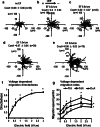GSK-3β is essential for physiological electric field-directed Golgi polarization and optimal electrotaxis
- PMID: 21207103
- PMCID: PMC3136619
- DOI: 10.1007/s00018-010-0608-z
GSK-3β is essential for physiological electric field-directed Golgi polarization and optimal electrotaxis
Abstract
Endogenous electrical fields (EFs) at corneal and skin wounds send a powerful signal that directs cell migration during wound healing. This signal therefore may serve as a fundamental regulator directing cell polarization and migration. Very little is known of the intracellular and molecular mechanisms that mediate EF-induced cell polarization and migration. Here, we report that Chinese hamster ovary (CHO) cells show robust directional polarization and migration in a physiological EF (0.3-1 V/cm) in both dissociated cell culture and monolayer culture. An EF of 0.6 V/cm completely abolished cell migration into wounds in monolayer culture. An EF of higher strength (≥1 V/cm) is an overriding guidance cue for cell migration. Application of EF induced quick phosphorylation of glycogen synthase kinase 3β (GSK-3β) which reached a peak as early as 3 min in an EF. Inhibition of protein kinase C (PKC) significantly reduced EF-induced directedness of cell migration initially (in 1-2 h). Inhibition of GSK-3β completely abolished EF-induced GA polarization and significantly inhibited the directional cell migration, but at a later time (2-3 h in an EF). Those results suggest that GSK-3β is essential for physiological EF-induced Golgi apparatus (GA) polarization and optimal electrotactic cell migration.
Figures







Similar articles
-
Golgi polarization in a strong electric field.J Cell Sci. 2005 Mar 15;118(Pt 6):1117-28. doi: 10.1242/jcs.01646. Epub 2005 Feb 22. J Cell Sci. 2005. PMID: 15728257 Free PMC article.
-
Electric signals regulate directional migration of ventral midbrain derived dopaminergic neural progenitor cells via Wnt/GSK3β signaling.Exp Neurol. 2015 Jan;263:113-21. doi: 10.1016/j.expneurol.2014.09.014. Epub 2014 Sep 28. Exp Neurol. 2015. PMID: 25265211
-
Signaling pathways mediating phosphorylation and inactivation of glycogen synthase kinase-3β by the recombinant human δ-opioid receptor stably expressed in Chinese hamster ovary cells.Neuropharmacology. 2011 Jun;60(7-8):1326-36. doi: 10.1016/j.neuropharm.2011.01.032. Epub 2011 Jan 27. Neuropharmacology. 2011. PMID: 21276805
-
Electrical fields in wound healing-An overriding signal that directs cell migration.Semin Cell Dev Biol. 2009 Aug;20(6):674-82. doi: 10.1016/j.semcdb.2008.12.009. Epub 2008 Dec 25. Semin Cell Dev Biol. 2009. PMID: 19146969 Review.
-
Endogenous electric fields as guiding cue for cell migration.Front Physiol. 2015 May 13;6:143. doi: 10.3389/fphys.2015.00143. eCollection 2015. Front Physiol. 2015. PMID: 26029113 Free PMC article. Review.
Cited by
-
Physiological electrical signals promote chain migration of neuroblasts by up-regulating P2Y1 purinergic receptors and enhancing cell adhesion.Stem Cell Rev Rep. 2015 Feb;11(1):75-86. doi: 10.1007/s12015-014-9524-1. Stem Cell Rev Rep. 2015. PMID: 25096637 Free PMC article.
-
Endogenous bioelectrical networks store non-genetic patterning information during development and regeneration.J Physiol. 2014 Jun 1;592(11):2295-305. doi: 10.1113/jphysiol.2014.271940. J Physiol. 2014. PMID: 24882814 Free PMC article. Review.
-
Electrical signaling in control of ocular cell behaviors.Prog Retin Eye Res. 2012 Jan;31(1):65-88. doi: 10.1016/j.preteyeres.2011.10.001. Epub 2011 Oct 17. Prog Retin Eye Res. 2012. PMID: 22020127 Free PMC article. Review.
-
Molecular bioelectricity in developmental biology: new tools and recent discoveries: control of cell behavior and pattern formation by transmembrane potential gradients.Bioessays. 2012 Mar;34(3):205-17. doi: 10.1002/bies.201100136. Epub 2012 Jan 11. Bioessays. 2012. PMID: 22237730 Free PMC article. Review.
-
In vitro and in vivo neuronal electrotaxis: a potential mechanism for restoration?Mol Neurobiol. 2014 Apr;49(2):1005-16. doi: 10.1007/s12035-013-8575-7. Epub 2013 Nov 16. Mol Neurobiol. 2014. PMID: 24243342 Review.
References
-
- Nuccitelli R. Endogenous electric fields in embryos during development, regeneration and wound healing. Radiat Prot Dosimetry. 2003;106:375–383. - PubMed

